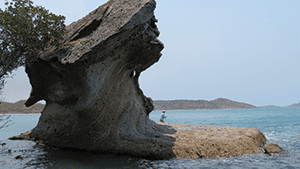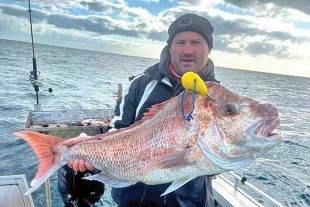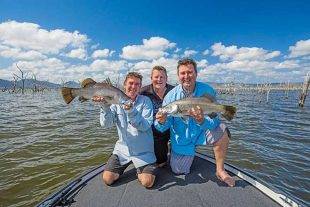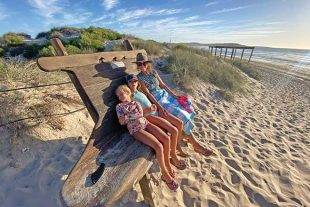EXPLORING and fishing Cape York by any means of transport (maybe rule out a scooter) is an awesome experience. Taking a boat can enhance the experience, with most people typically doing short day or day/night trips.
Much less common, and understandably so because of the logistical challenges, is boating further afield for a few days or more and camping along the way. The fact is, boats greater than 4.5m in length offer a wonderful opportunity to range more widely, given careful planning and loading and an extended spell of good weather.
Of course, the planning and good weather aspects cannot be emphasised enough. Sometimes, as we all know, things just go awry (especially the weather). In which case, thorough preparation and planning that allows for delays due to wind or other factors really saves the day.
We’ve enjoyed a fair bit of boat-based camping over the years. Definitely the most impressive, challenging and fun experience was with my son Josh a couple of years ago. We voyaged from Cooktown to the tip of Cape York over 12 days in his 6m open Cyclone boat, accompanied by mate Ray Byers and Michael Jennings in Ray’s TABS boat, with the boys filming along the way.
Of course, Murphy’s law sent a trough our way during the first part of the trip, whipping the wind up to 30 knots and causing delays and increased fuel use in rough seas. So we were really happy that we were carrying about 30 percent more fuel than we expected to use and plenty of tucker and fresh water.
Being tucked away behind islands or sheltered headlands of course wasn’t all that hard to take, and we could relax knowing we had plenty of fuel and rations. In fact, we still had about 100 litres of fuel upon arriving at our first fuel point at Lockhart River Aboriginal community.
We stretched our freshwater supplies by washing with sea water, and even though it was an unseasonably dry December, we found plenty of water sources along the coastline. Water is definitely the thing no one wants to run out of.
People on average only last three days without water before going legs up, compared to a couple of weeks without food. So knowing likely places where emergency sources can be found is very useful.
Sometimes, fresh water just trickles out of swamps or dunes behind the beach.





Use a metal mug, flattish rock or shell to dig with if needed. The collected water can be filtered through clean cloth and is best boiled to destroy any little baddies. Otherwise, it is crucial to travel as lightly as possible and make sure, preferably via a pre-trip trial, that your vessel of choice can carry the load and remain seaworthy.
Sure, adequate fishing and cooking gear is needed, but keep it light. A suite of heavy cast iron cookware is not suited to this sort of trip. We used an Esky on each boat to store basic perishables and to keep fish for dinner, with the ice lasting fairly well.
However, we carried a lot of non-perishable and semi-perishable food in plastic barrels that kept everything nice and dry. Wraps, rice and pasta are good basic boat camping tucker. Take some sort of small gas cooker because fires are usually not allowed on island national parks.
And as well as up-to-date safety gear, a satellite phone is a very wise investment both for keeping in touch with family and advising them of any dramas. An effective and safe boat anchoring and retrieval system is essential, especially given the usual presence of crocodiles.
We use a stern rope that can pull the boat to shore or close enough, or a running rope secured to an anchored buoy just offshore that is pulled up and stowed until the next camp anchorage. So where to go?
Starting in the south, from Cooktown you can camp on the Hope Islands, which are nothing short of stunning, or head north to the Cape Bedford area, and maybe even duck around the corner to the Elim Beach area.
From Bathurst Bay or Bathurst Heads you can camp at Flinders Island for a great island experience and some excellent pelagic and reef fishing. Port Stewart near Coen offers places to boat and camp up and down the coast, as does the Lockhart River/Chilli Beach area (Iron Range National Park).
On the west coast, Vrilya Point and Cullen Point near Mapoon as well as Weipa open up access to a heap of beautiful coastline and rivers. And plenty of lesser-known departure points exist as well, you just need to do some research.
The important thing is to let others know of your plans, have the relevant permissions or permits and observe marine park zoning regulations. Land and sea rangers or Aboriginal councils usually issue permits (for a fee) and offer good advice for their country.
With care, boat-based camping can open up a whole new world of fishing and camping experiences.
 Bush 'n Beach Fishing Magazine Location reports & tips for fishing, boating, camping, kayaking, 4WDing in Queensland and Northern NSW
Bush 'n Beach Fishing Magazine Location reports & tips for fishing, boating, camping, kayaking, 4WDing in Queensland and Northern NSW









